
Most pixels in cameras detect only red, green or blue light. A sensor made from perovskite materials absorbs all three, improving image brightness and resolution
https://go.nature.com/3T1oKcd
@stephenmichalchuk.com.bsky.social
🇨🇦 Post Doctoral Research Geologist #pseudotachylyte #mylonite #shearzone #garnet #plagioclase #geothermal https://www.stephenmichalchuk.com IG: @powphotog

Most pixels in cameras detect only red, green or blue light. A sensor made from perovskite materials absorbs all three, improving image brightness and resolution
https://go.nature.com/3T1oKcd

Jobs on Friday! ⚠️
2 post-doctoral researcher positions (2 years) to investigate deformation processes that occur before and during earthquakes.
Where: the Njord Centre, a leading research centre in physics and geosciences at the University of Oslo.
www.jobbnorge.no/en/available...
#geology

Canadian academics are some of the Americas’ top research collaborators and receive funding from US agencies. As a result, they have not been spared from the funding cuts and job losses that are plaguing their US counterparts. #Academicsky 🧪
31.05.2025 22:42 — 👍 56 🔁 22 💬 0 📌 3

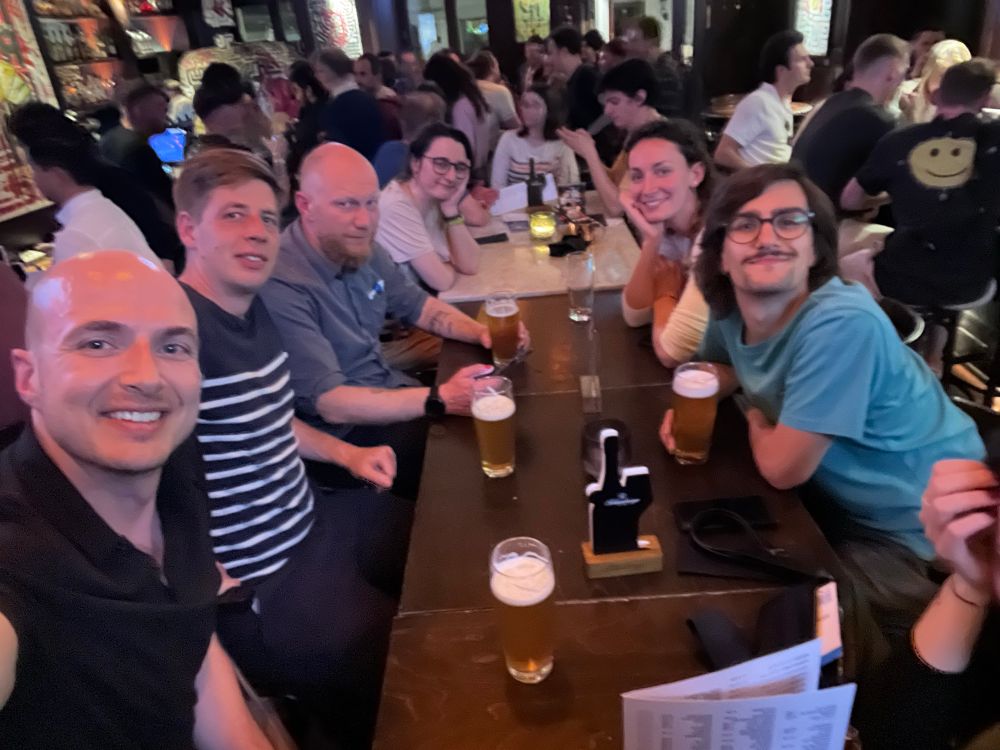
@sheared-sash.bsky.social
03.05.2025 13:01 — 👍 0 🔁 0 💬 0 📌 0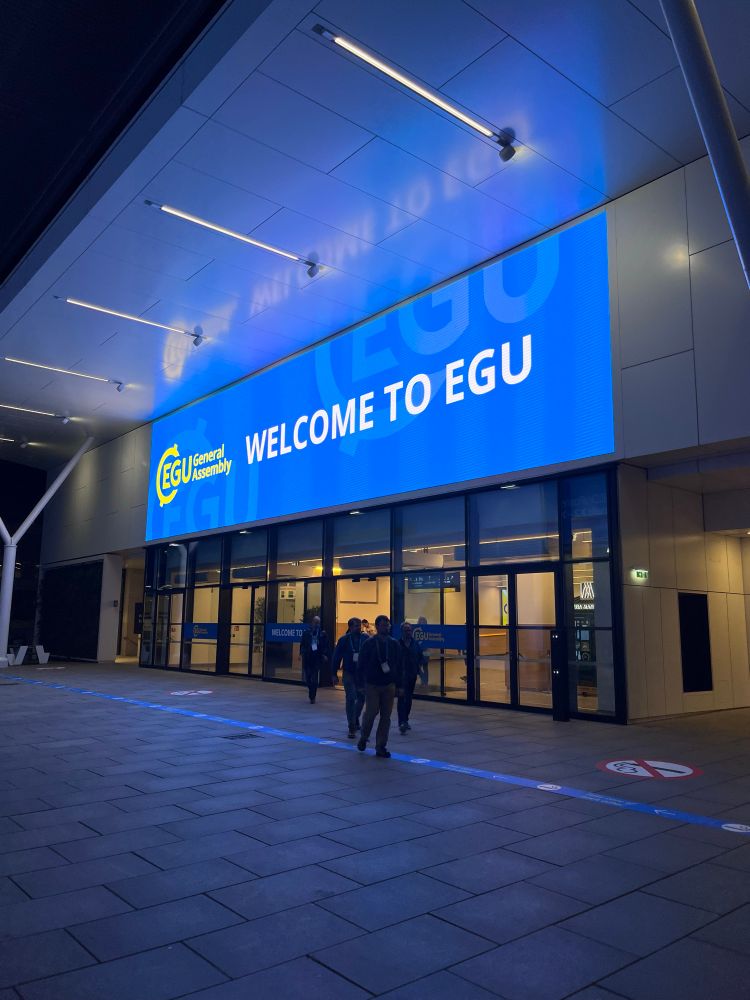
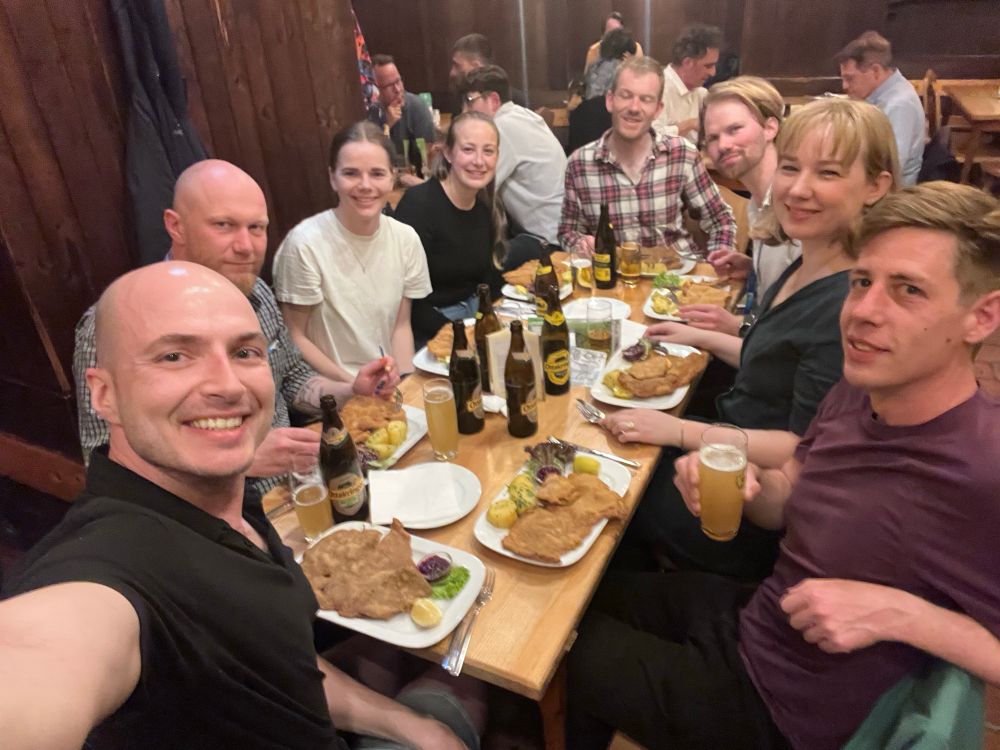

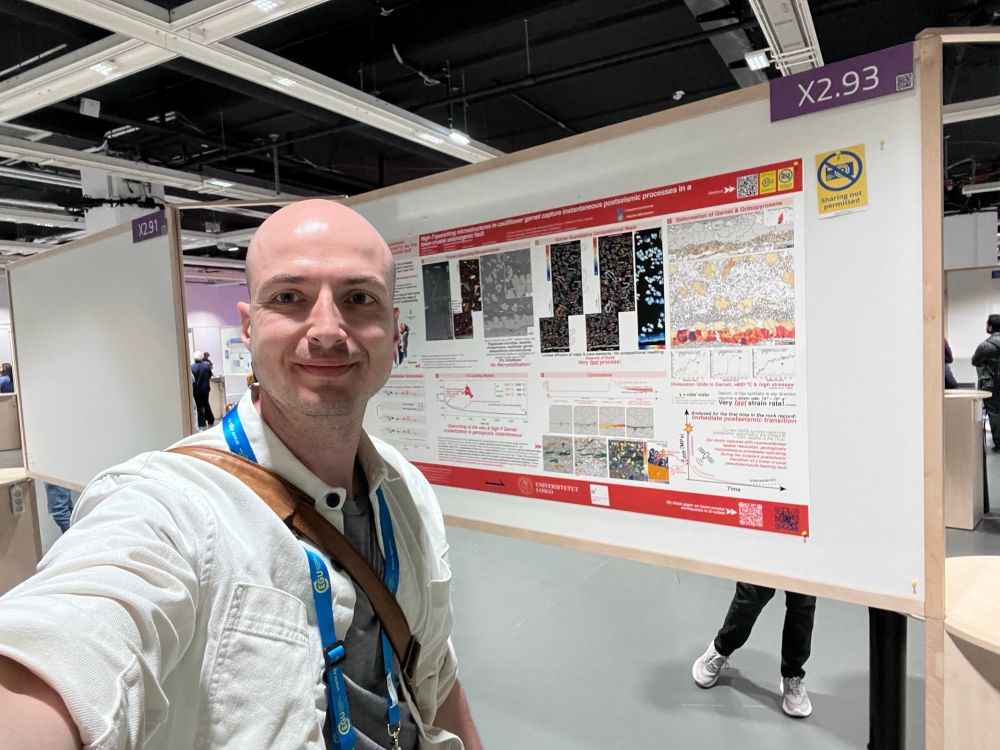
What a week @egu.eu. Lots of interesting presentations and fantastic sunny hot weather in Vienna! Sadly, not enough schnitzels! Oh well, maybe next year. @sheared-sash.bsky.social
03.05.2025 13:01 — 👍 5 🔁 0 💬 1 📌 0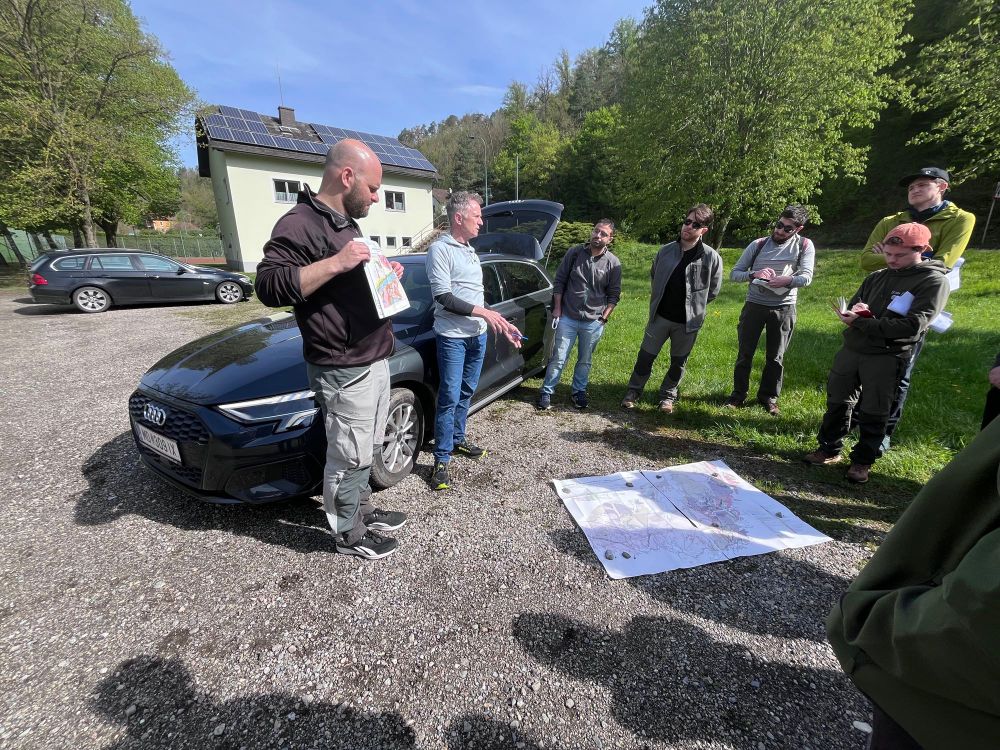
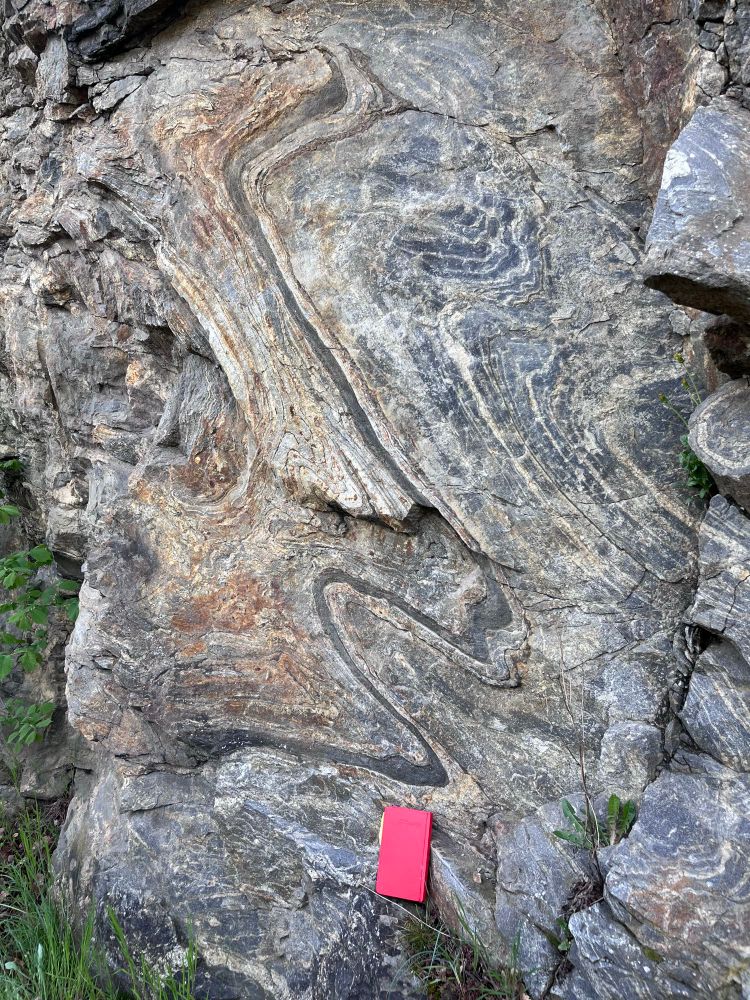
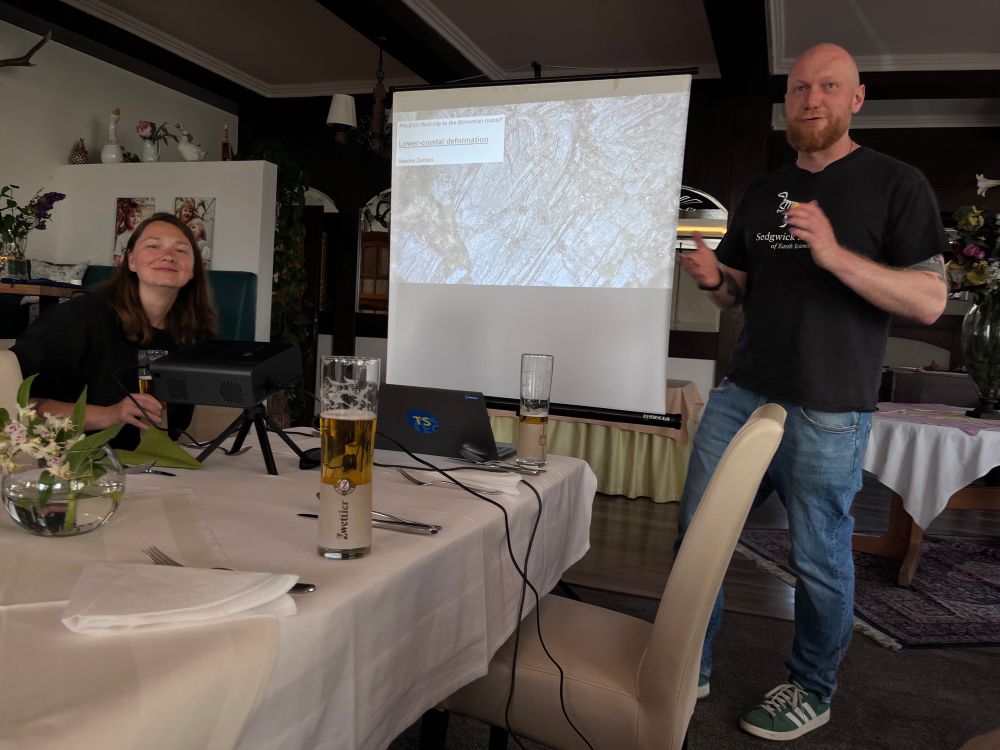
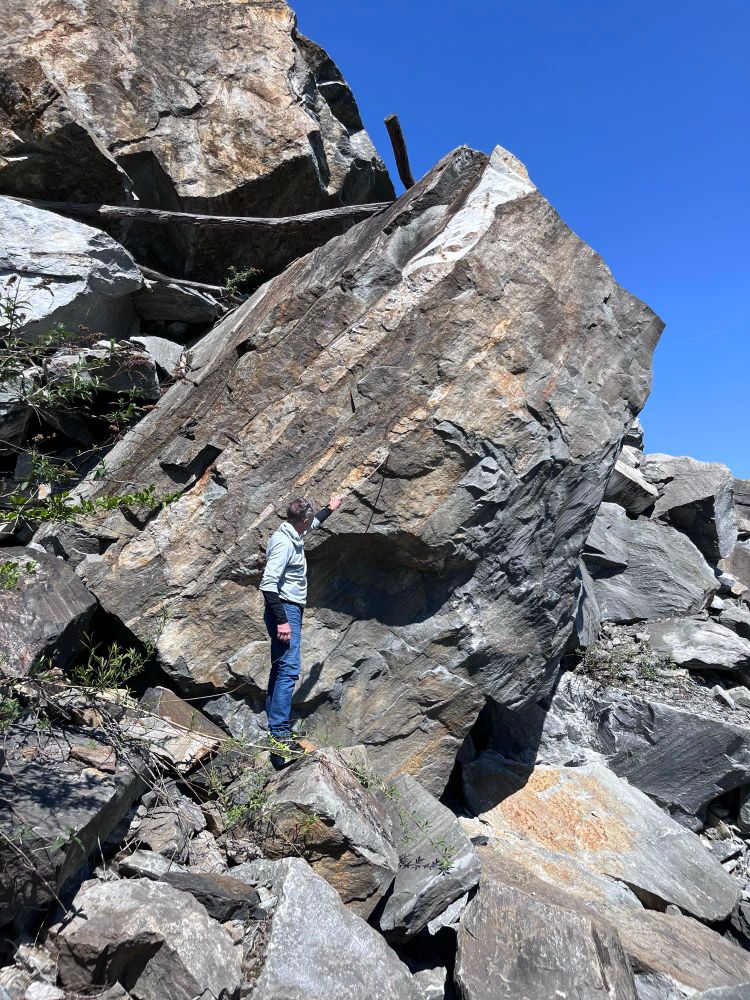
The return of the pre-EGU fieldtrip through the Austrian Bohemian Massif was a fantastic way to kickoff the conference week. Fantastic weather and fantastic organization made it very enjoyable! Thanks Bernhard, Anna, @sheared-sash.bsky.social and Chris. #egu25 @egu.eu @ts.egu.eu 🪨 🧪⚒️ #geology
29.04.2025 20:37 — 👍 17 🔁 3 💬 0 📌 0Silvio and Matt Cohen
29.04.2025 20:30 — 👍 0 🔁 0 💬 0 📌 0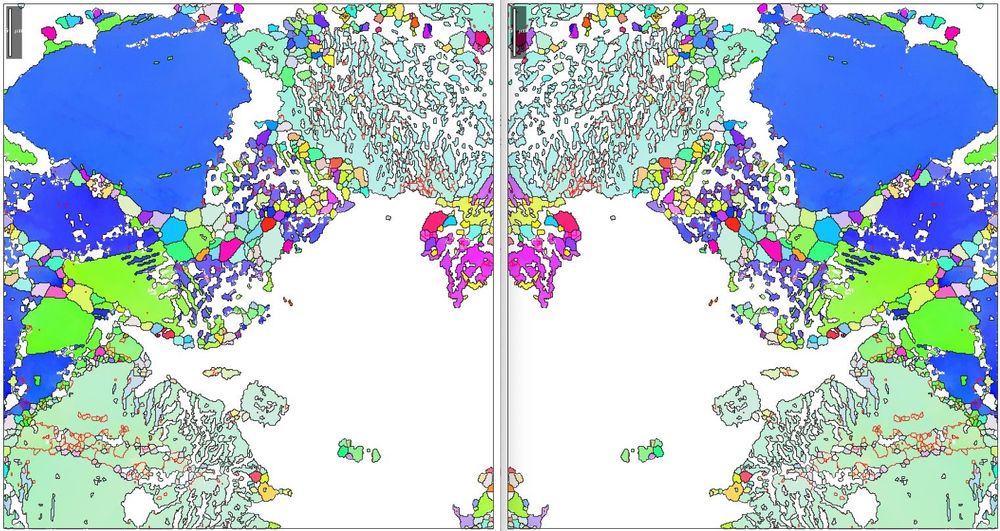
EBSD orientation map of plagioclase
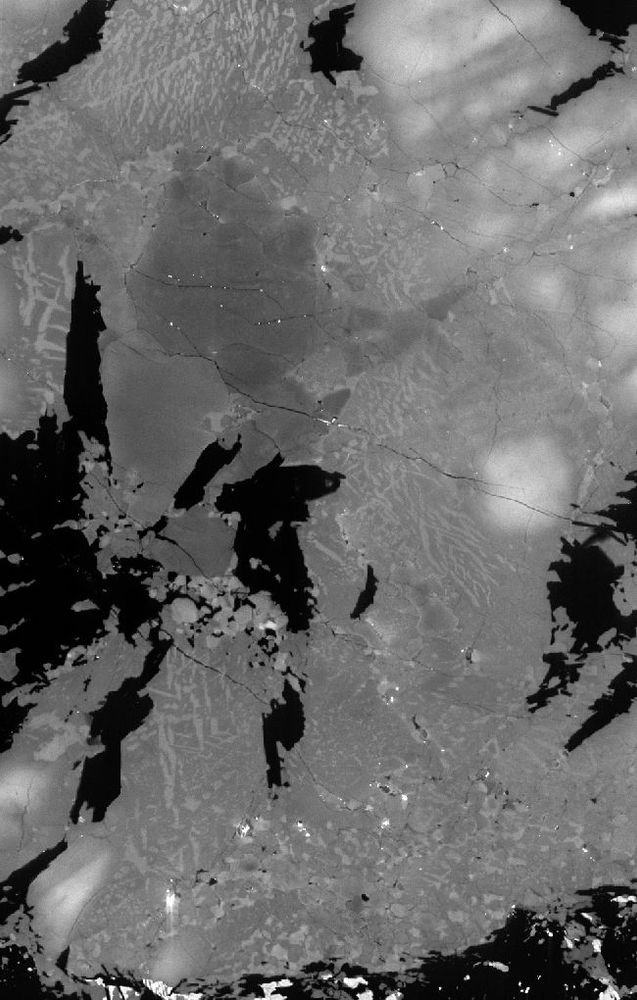
SEM-CL map of fractured plagioclase, quartz, K-feldspar, and mafic phases (black) next to a ductile shear zone (at bottom and out of sight)
It’s been a hot minute since my last #thinsectionthursday but here’s some things I’m working on these days… anyone else having issues with how2plot in MTEX 6.0? I’ve seen some solutions online.. think they’re working but it’s just so random how orientations get flipped without explicit scripting ⚒️🧪
24.04.2025 13:24 — 👍 3 🔁 0 💬 0 📌 0Takk Hugo!
12.03.2025 10:22 — 👍 1 🔁 0 💬 0 📌 0Thanks! Couldn’t have done 2/3 without you… some might even say 3/3 without you… but we’ll leave that for another debate hahah
12.03.2025 10:21 — 👍 0 🔁 0 💬 1 📌 0💥 hot off the press and 4 years in the making! My PhD thesis in all its glory! 2 published papers, 1 nearly ready for submission, and an exciting project in the making, all find a home in the pages within. Super proud of my work at Njord w/ Luca Menegon, Kristina Dunkel, & @sheared-sash.bsky.social
12.03.2025 08:19 — 👍 21 🔁 0 💬 3 📌 1It’s cause of the eggs pricing… #openingthecanofworms
04.03.2025 12:11 — 👍 0 🔁 0 💬 1 📌 0So you don’t shake hands with the rector/president in some fancy library and receive the degree all rolled up in a few weeks time?
04.03.2025 12:09 — 👍 0 🔁 0 💬 1 📌 0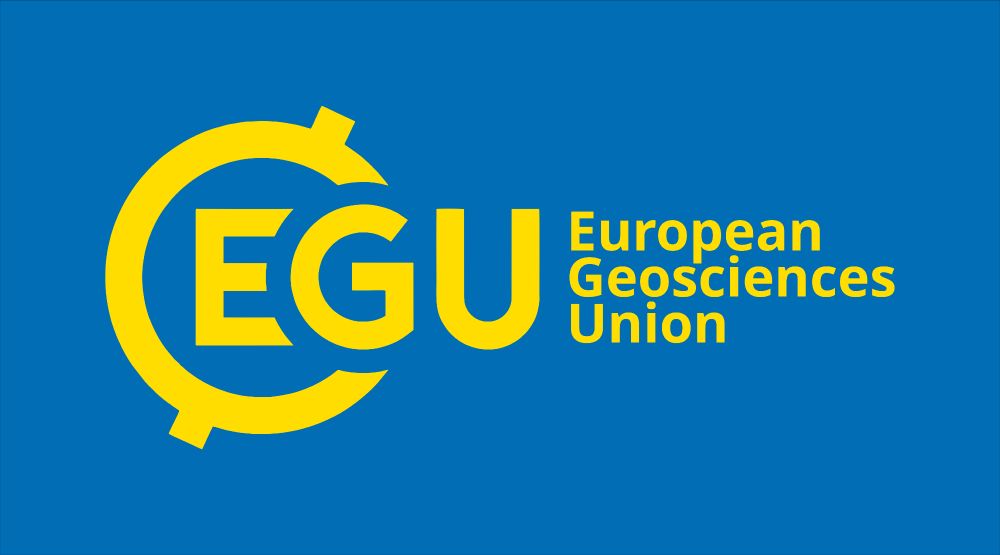
Blue background with yellow EGU logo and text that reads "European Geosciences Union".
Hello Bluesky! EGU is pleased to be able to activate our account here, and share all the exciting news about the upcoming General Assembly: #EGU25, our #OpenAccess publications and more! Several of our Divisions will be making the move over from Twitter/X too, so keep an eye out for your favourites!
03.03.2025 08:03 — 👍 396 🔁 101 💬 19 📌 28Great GUI. I’ll have to dig around with the plotting options. Lots of settings to sort out on how I want to present my data
23.02.2025 08:44 — 👍 1 🔁 0 💬 1 📌 0I saw that but it’s now outdated by 6 years
20.02.2025 15:57 — 👍 1 🔁 0 💬 0 📌 0Searches come back with R scripts or suggesting to use Web of Science author search, which are all valid of course. This website I came across was quick and easy
20.02.2025 09:10 — 👍 1 🔁 0 💬 0 📌 0Hey everyone,
Does anyone have a link to a website where you can search for conflict of interests among research collaborators? A few months ago (~Nov 2024), someone shared a link but I haven’t been able to find it or something similar with a google search. 🧪 ⚒️
😃 thanks Hugo!
04.02.2025 14:41 — 👍 1 🔁 0 💬 0 📌 0(3) Repeated fragmentation and comminution in addition to fluid at the grain boundaries are required to facilitate viscous deformation
04.02.2025 14:22 — 👍 4 🔁 0 💬 0 📌 0We find that
(1) Plagioclase in the damage zone of a lower-crustal pseudotachylyte deformed via pulverization-style fragmentation
(2) Liberated H2O as a result of the earthquake remained in grain boundary regions and facilitated neoblast growth and healing of fractures
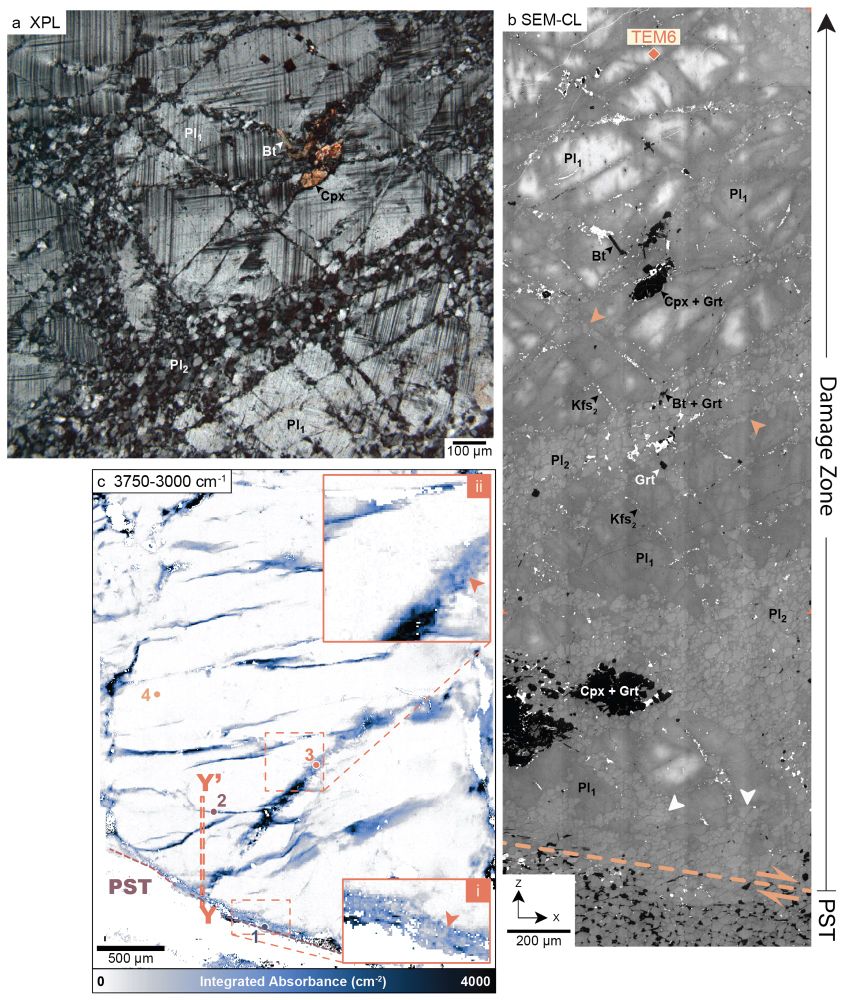
🚨 Hot off the press 🪨 ⚒️ Where do you come from, where do you go 🎶 fluids that is… after an earthquake in the dry lower crust? We look into this and more using SEM-CL, EBSD, EMPA, STEM, and FTIR!
Hit the link below 👇
agupubs.onlinelibrary.wiley.com/doi/full/10....
The poll was only open for all of… less than a week. How many answered? Is it even representative? Article date for the poll is January 14th and today is the 18th
18.01.2025 15:45 — 👍 2 🔁 1 💬 0 📌 0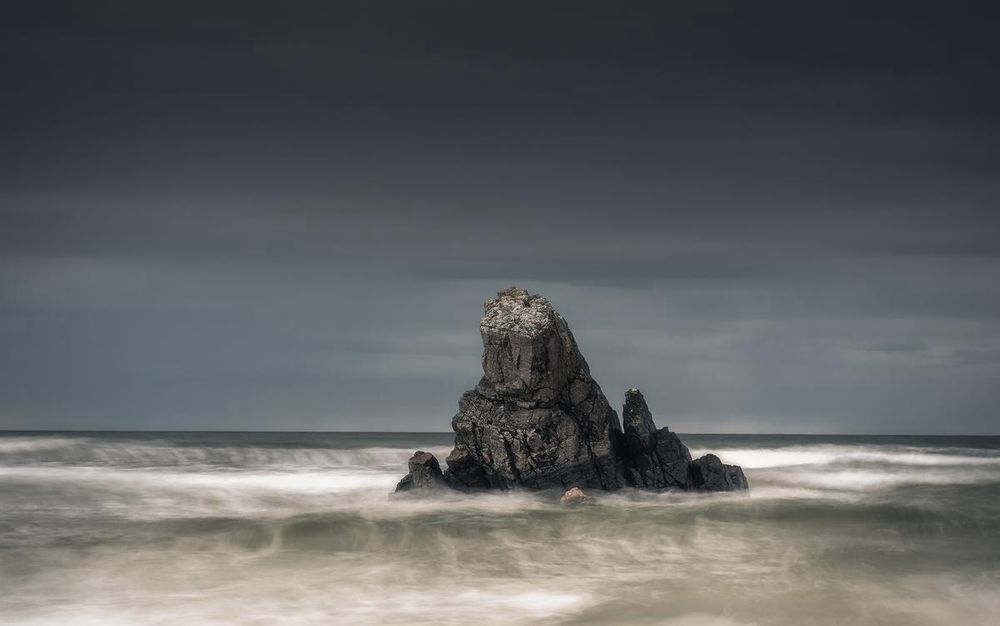
Our deep-time emissary, Marcia Bjornerud, takes us on a metamorphic journey.
⚒️🧪 geology GIS
Charles personally reads each research article generated by his peoples haha
11.12.2024 09:50 — 👍 1 🔁 0 💬 0 📌 0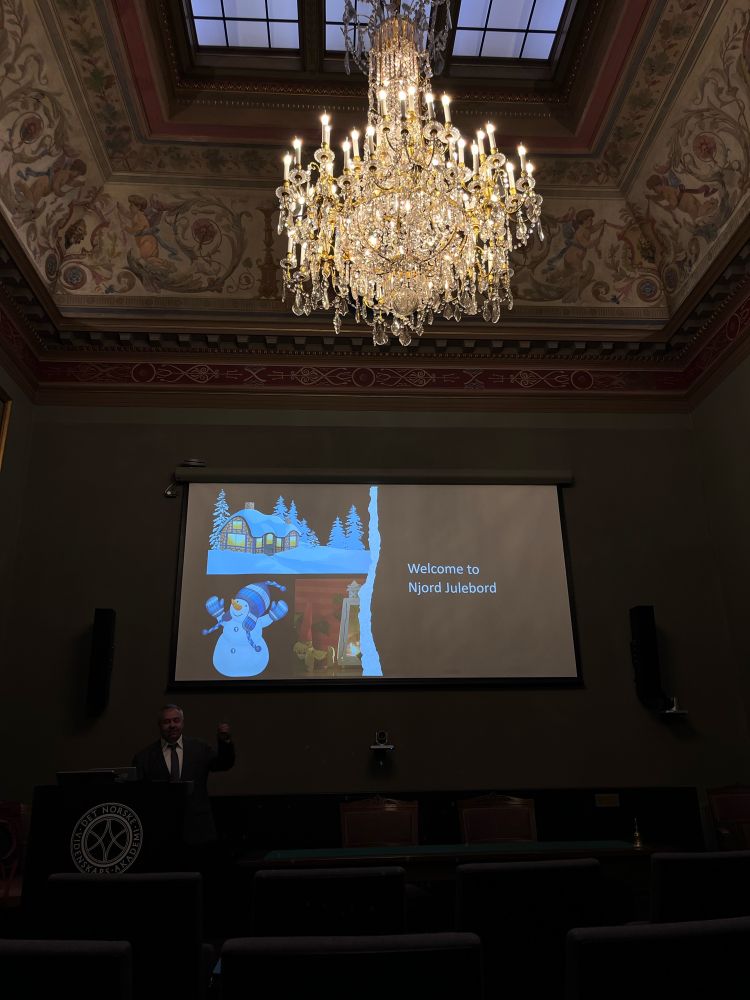
The boogie auditorium with François Renard

My yearly Nansen photo!
The Njord Julebord at Det Norske Videnskaps Akademi
An evening of some science and a lot of ribbe🎄 ⚒️🧪🪨🔬
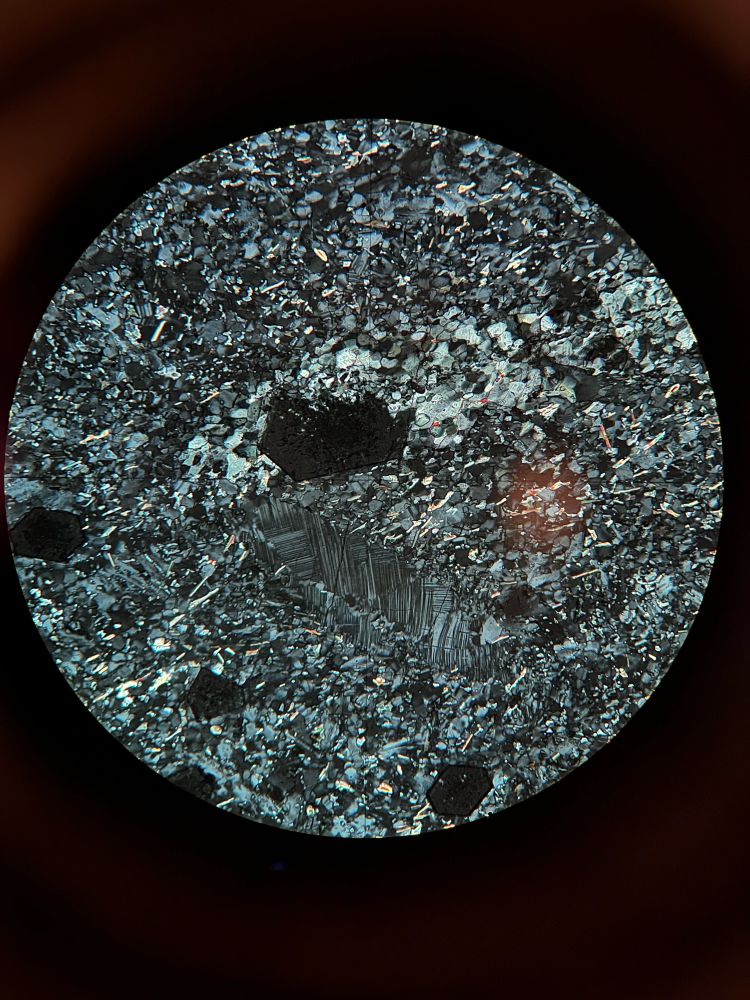
Crossed polarized light micrograph of a pseudotachylyte
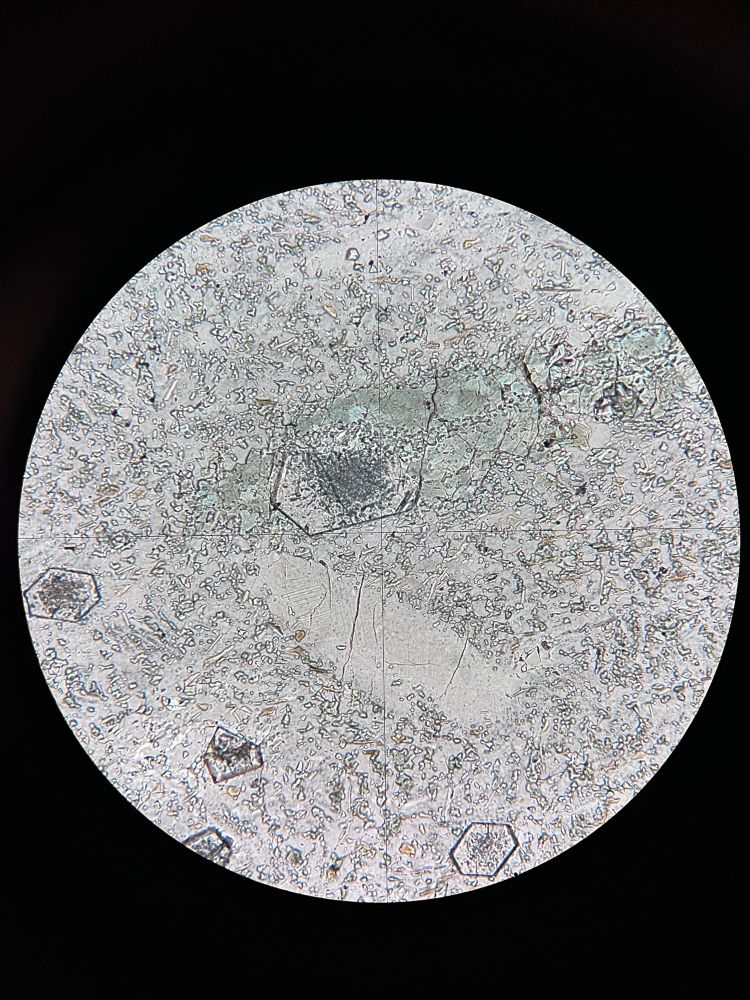
Plane polarized light micrograph of a pseudotachylyte
🪨⚒️ #thinsectionthursday of a recrystallized quenched frictional melt (pseudotachylyte) from Lofoten, Norway. Plagioclase survivor clast retains deformation twins, reaction between garnet-amphibole. Garnet cores are full of inclusions from rapid quenching growth, then slow growth to form facet GB🧪 🔬
05.12.2024 06:54 — 👍 34 🔁 7 💬 0 📌 1Congrats 🥳 🎉
03.12.2024 07:35 — 👍 1 🔁 0 💬 0 📌 0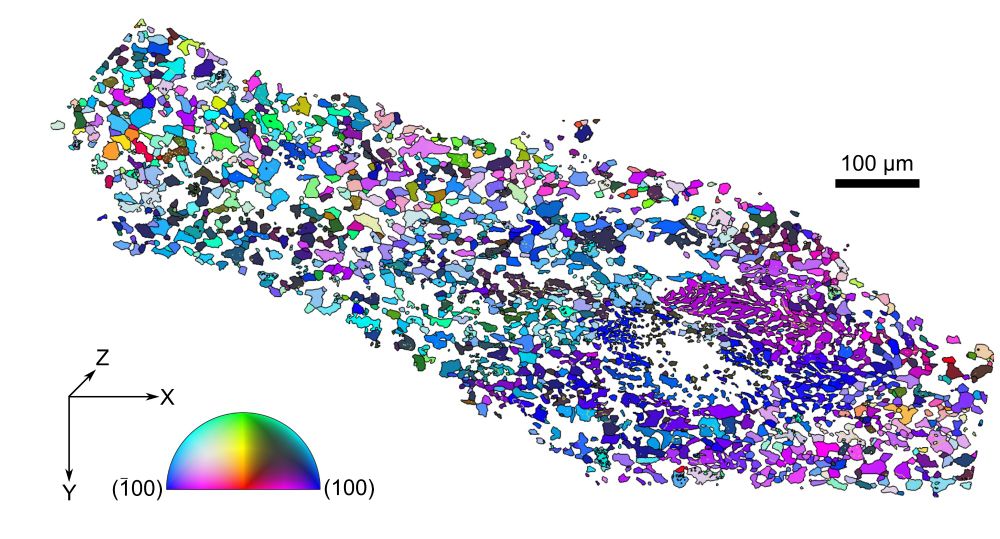
Orientation map (IPFZ) of diopside that formed from the breakdown of omphacite, a high pressure mineral.
This is a map showing the orientation of diopside in a deformed symplectite. This used to be an omphacite, which tells us that the rock used to be at very high pressure (great depth). ⚒️🧪
If you want to read more about how such symplectites nucleate and deform:
link.springer.com/article/10.1...